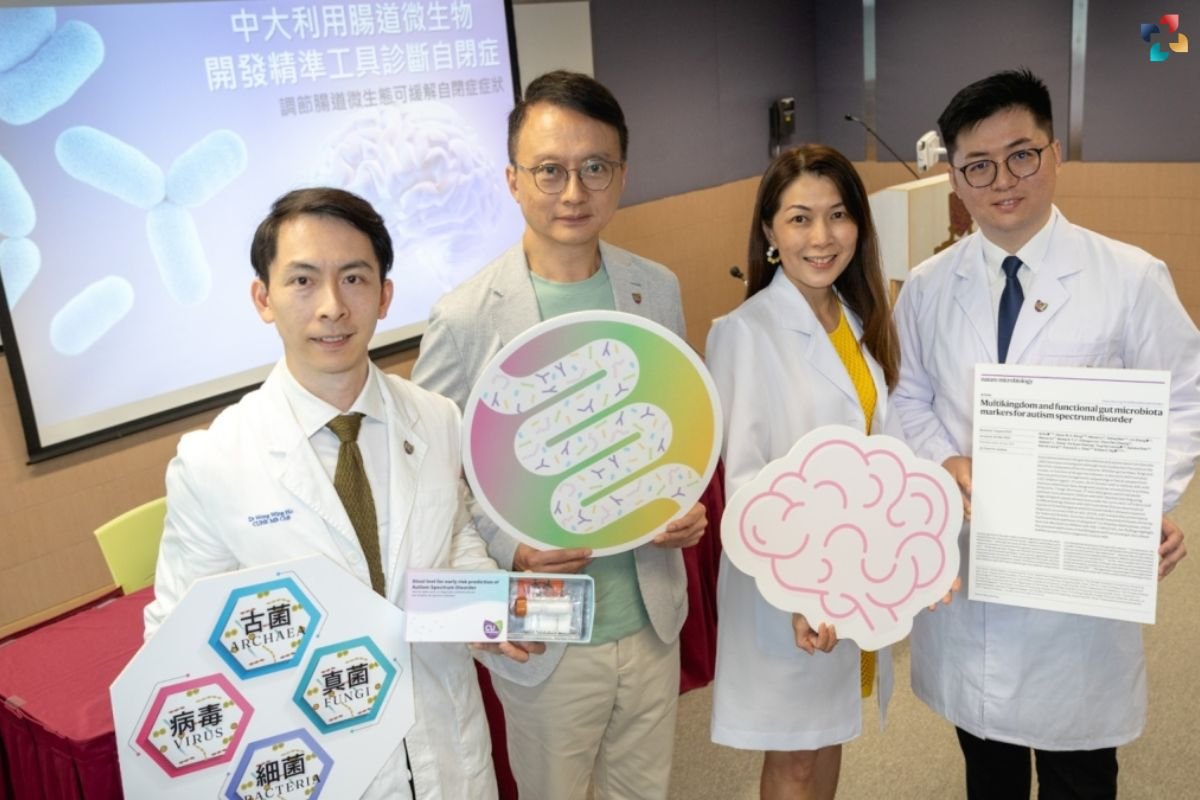Source-hongkongbusiness.hk
A recent study published in Nature Microbiology has uncovered significant associations between various gut microbiome components and autism spectrum disorder (ASD) in children. This comprehensive research suggests that the interplay of microbial kingdoms—archaeal, fungal, viral, and bacterial—plays a crucial role in ASD, a neurodevelopmental condition marked by social, cognitive, and behavioral challenges.
The causes of ASD are believed to be a combination of genetic and environmental factors. Recent findings highlight the gut microbiome‘s role in influencing the gut-brain axis and neuroimmune networks. Altered gut microbiota compositions have been noted in children with ASD, and interventions like fecal microbiota transplants from healthy donors have shown symptom improvements. While most research has traditionally focused on bacterial components, emerging metagenomic technologies emphasize the need to explore archaea, fungi, and viruses to fully understand their contributions to autism spectrum disorder.
Methodology and Participant Profiles
The study involved children under 12 years old, both neurotypical and with ASD, recruited from the Child and Adolescent Psychiatric Clinic between December 2021 and December 2023. ASD diagnosis was based on the Diagnostic and Statistical Manual of Mental Disorders, Fifth Edition (DSM-5) criteria. Neurotypical children were matched by age and sex and screened using the Chinese Autism Spectrum Quotient Child Version. Exclusions included individuals with mental retardation, neurological disorders, psychosis, depressive disorders, major medical illnesses, recent probiotic or antibiotic use, and certain medications.
Comprehensive participant profiles covered demographics, physical and psychiatric conditions, gastrointestinal (GI) disorders, medication history, parental parameters, and dietary patterns. To test marker specificity, an independent hospital ASD cohort and a community ASD cohort were established for validation, alongside cohorts for ADHD and atopic dermatitis.
Stool samples were collected using preservative media to ensure the integrity of microbial DNA and RNA. DNA extraction and sequencing were performed using an Illumina NovaSeq system, followed by quality filtering and mapping to various genomes. Microbial profiles were analyzed using Kraken 2, Bracken, and HUMAnN, with data transformed for microbiome-phenotype association assessments. Machine learning models, trained using random forest classifiers, were tested in independent validation cohorts and public datasets to ensure robustness.
Key Findings and Diagnostic Potential
The study included 1,627 children aged 1-13 years from five independent cohorts. Extensive phenotypic data, including factors like age, sex, BMI, diet, medication, comorbidities, psychiatric disorders, GI symptoms, family characteristics, and technical factors, were collected. Metagenomic sequencing was performed on fecal samples from these children, including 709 children with ASD and 374 neurotypical controls in the discovery cohort. An independent hospital cohort of 172 fecal samples and a community cohort of younger children were used for validation. Additionally, 237 fecal metagenomes from published datasets and non-ASD cohorts of children with ADHD and atopic dermatitis were analyzed for further validation and specificity testing.
The results indicated that host phenotype factors explained 17.1% and 15.7% of the variation in microbiome pathways and microbial genes, respectively. ASD diagnosis emerged as the top factor influencing both microbiome pathways and microbial genes. Notably, the ubiquinol-7 and thiamine diphosphate biosynthesis pathways were significantly reduced in children with ASD compared to neurotypical children, highlighting their potential role in ASD pathogenesis.
The study evaluated single-kingdom microbial markers for ASD diagnosis, with the microbial pathway model showing the strongest predictive ability (AUC 0.87), followed by microbial genes (AUC 0.86), bacteria (AUC 0.85), archaea (AUC 0.76), fungi (AUC 0.74), and viruses (AUC 0.68). A multikingdom model combining these features demonstrated superior performance with an AUC of 0.91, indicating higher diagnostic accuracy for detecting autism spectrum disorder.
External validation of the 31-marker panel in an independent hospital cohort maintained an AUC ranging







